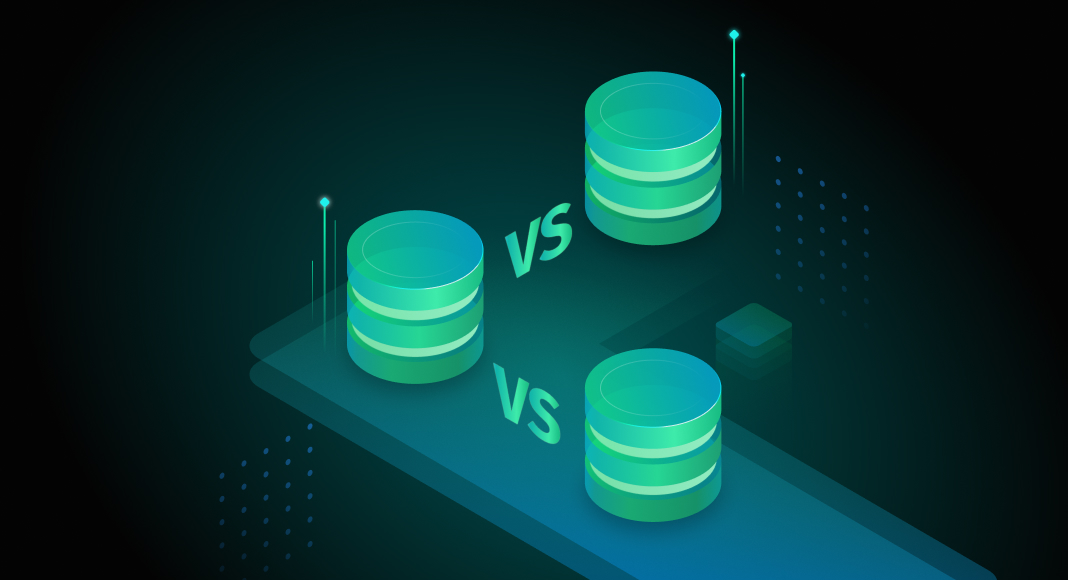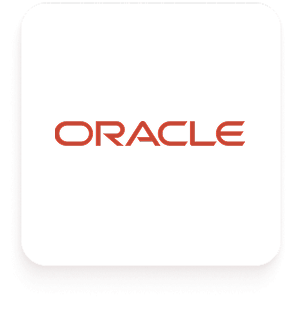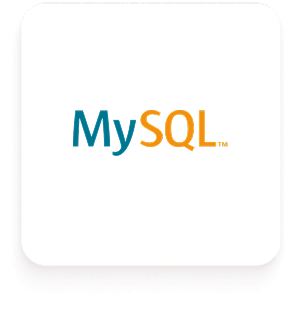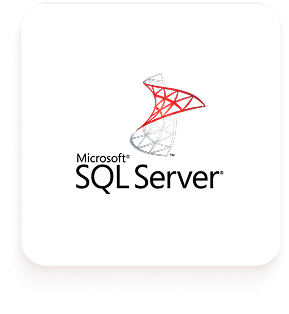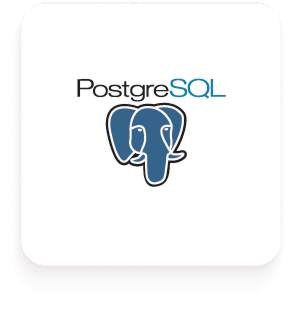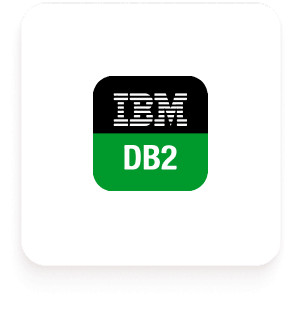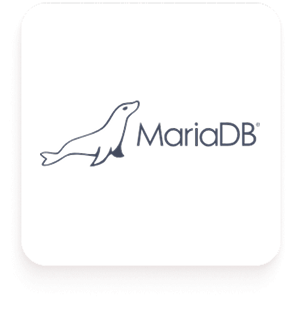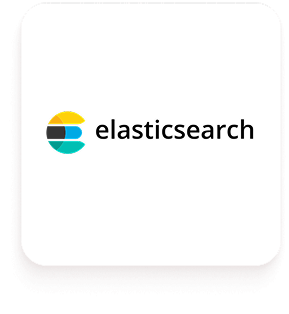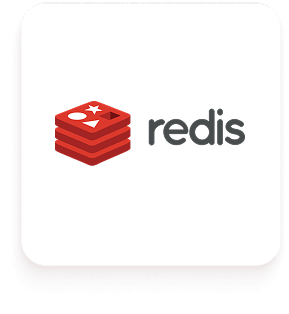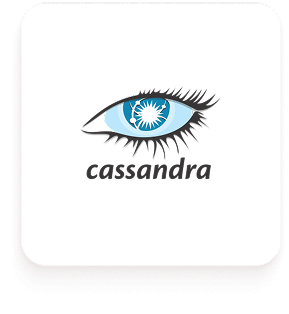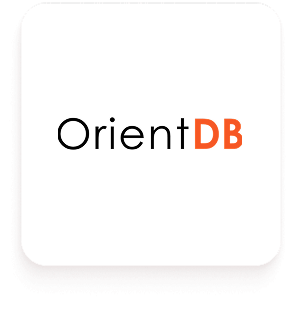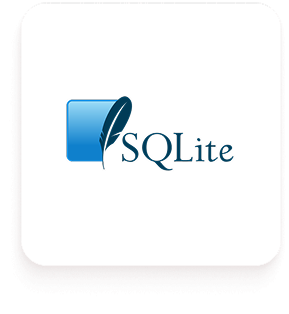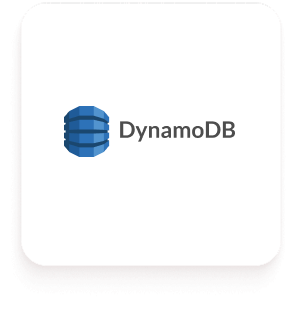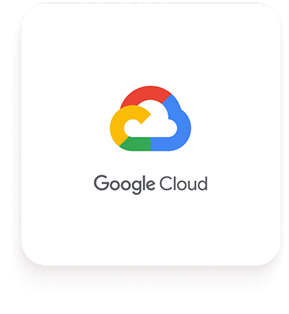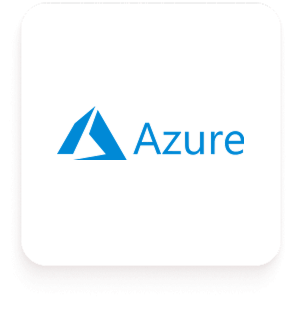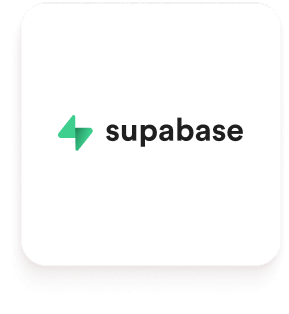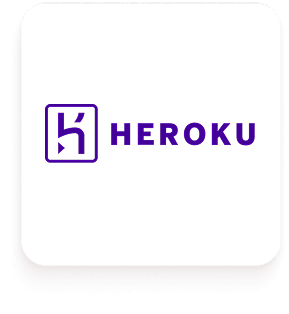With the increasing list of databases — SQL and NoSQL, each with its own strengths and use cases — it’s essential to understand how these systems differ and which one is right for your specific requirements. In this article, we’ll break down their features, advantages, and real-world use cases, helping you make the best choice for your project.
- What is a Database Management System (DBMS)?
- List of the Best Relational Database Management Systems (RDBMS)
- Most Popular Non-Relational Databases (NoSQL)
- Lightweight and Embedded Databases
- Best Cloud-Based Databases
- How to Choose the Right Database for Your Application
- Conclusion
What is a Database Management System (DBMS)?
A Database Management System (DBMS) can be described as software that is designed to store, manage, and retrieve data efficiently. It sits at the core of most modern applications and is indispensable for ensuring that your data is well-organized, easily accessible, and fully secure. DBMS allow you to create, read, update, and delete data in a well-organized approach, which is often handled through a query language such as SQL.
Scalability, performance, and security are the three cornerstones for those searching for the best database management software. With proper scalability, your system will be able to handle growing amounts of data and user traffic. Performance is extra important when you need fast and efficient retrieval of data. Security, on the other hand, is all about protecting sensitive information and controlling who can access the data. Developers must thoroughly understand these key elements before choosing the right DBMS type for their project.
Different Types of DBMS: SQL vs. NoSQL
The types of database management systems generally split into two main classes: SQL (relational) and NoSQL (non-relational). Each of them can offer certain unique features suited to various types of applications.
SQL Databases (Relational):
- Store structured data in tables, with schemas being predefined. If you’re just getting started, it might help to understand the MySQL meaning, as it’s one of the most widely used relational databases globally.
- Use SQL for querying and data management, which promotes ACID compliance
- Ideal for applications that need complex relationships and data integrity to function, e.g., financial systems
- Can have scalability and flexibility issues when handling large or dynamic datasets
NoSQL Databases (Non-relational):
- Store unstructured or semi-structured data, with schemas being flexible
- Support diverse models such as document, key-value, or graph databases
- Perfect for high-speed read/write operations, handling of big data
- May sacrifice ACID compliance when improved scalability and performance are required
Hybrid approaches, in the context of database software comparison, find the middle ground in combining features of both systems mentioned above. Thanks to that, they can prove to be a more flexible solution if your organization prefers a blend of both choices.
dbForge Edge is compatible with 35+ database and cloud services. Explore how it can amplify your workflow!
List of the Best Relational Database Management Systems (RDBMS)
Relational Database Management Systems (RDBMS) are a cornerstone in database management, specifically for applications that require structured data storage plus consistency. With their use of tables, rows, and columns, RDBMS offer reliable and scalable options, best suited for businesses and applications working with complex data relationships.
Oracle is the popular database software lauded for its scalability, security features, and boosted performance. It is trusted by top-tier global companies worldwide, designed to handle increased data volumes, and supports demanding transactional operations.
Key features and use cases:
- Enterprise-grade scalability combined with in-memory processing
- AI Vector Search enables semantic and value-based search of structured and unstructured data
- Suited for large-scale applications (e.g. financial systems)
Pros:
- Exceptional performance and scalability in the case of Real Application Clusters (RAC)
- Robust security when working with encryption and data masking
Cons:
- Comes with high licensing costs
- Complex management requiring in-depth knowledge
Boost your Oracle development with dbForge Studio for Oracle, an advanced IDE designed specifically to accelerate PL/SQL coding.
MySQL is one of the most popular database management systems, being reliable and open-source. Known for its simplicity and reliable transaction handling, MySQL is an ideal choice for businesses on the lookout for a cost-effective database.
Key features and use cases:
- Open-source with ACID compliance, ensuring reliable transactions
- Perfect for small to medium-scale web apps, e-commerce platforms, and also content management systems
- Offers support for JSON and vector data types
Pros:
- Easy setup, reinforced with a user-centric interface
- Strong community support and detailed documentation
- High performance intended for read-heavy workloads
Cons:
- Limited scalability in case of large-scale applications
- Lacks advanced features that can be found in PostgreSQL or Oracle
Looking to improve your MySQL development? dbForge Studio for MySQL is a comprehensive IDE for MySQL and MariaDB, designed to simplify every aspect of database management.
Microsoft SQL Server is one of the relational database management system types, offering seamless integration with Microsoft’s ecosystem, making it the go-to choice for businesses heavily invested in Microsoft technologies.
Key features and use cases:
- Advanced security features and integration with Microsoft tools
- Robust business intelligence (BI) and reporting capabilities
- Well-suited for large-scale enterprise applications relying on the Microsoft ecosystem
Pros:
- Strong support and seamless integration with other Microsoft products
- Optimized for analytics, business intelligence, and reporting
Cons:
- High licensing costs and total cost of ownership
- Limited cross-platform flexibility in relational database comparisons, contrasted with open-source databases
Interested in testing out SQL Server tools before committing? With Devart’s free trial, you can explore fully functional versions of our software products for 30 days at no cost.
PostgreSQL is a popular DBMS known for its robustness, complex query support, JSON handling, and customizable extensions, which makes it suitable for businesses requiring high data integrity and flexibility.
Key features and use cases:
- Advanced querying capabilities, robust JSON support, and extensibility through plugins
- Well-suited for applications requiring complex data analytics, reporting, and high data integrity
Pros:
- High standards of database integrity and consistency with ACID compliance
- Active community and an extensive database tool list for developers, including custom extensions
Cons:
- Slower performance for high-transaction, simple queries
- Steeper learning curve for newcomers and developers unfamiliar with its advanced features
Enhance your PostgreSQL development with dbForge for PostgreSQL, offering powerful tools such as Studio, Data Compare, and Schema Compare.
IBM Db2 is a robust, enterprise-grade type of RDBMS optimized for advanced analytics, AI, and machine learning workloads. Its support for hybrid cloud environments makes it a preferred choice for data-intensive enterprises.
Key features and use cases:
- Excellent optimization for AI-driven and machine learning applications
- Hybrid cloud support for seamless scalability and adaptability
- Suitable for enterprises focused on robust data analytics and business intelligence
Pros:
- Outstanding performance for complex analytics workloads
- Flexible deployment options across on-premises and cloud platforms
Cons:
- High cost and resource-intensive for smaller businesses
- Requires specialized expertise for effective management
MariaDB is an open-source relational type of database program. Developed as a fork of MySQL, it excels in database scalability comparison and performance for modern applications. It is well-suited for enterprise-level web applications and cloud-native deployments.
Key features and use cases:
- Improved performance and scalability compared to MySQL, with support for distributed SQL and advanced storage engines
- Ideal for enterprise applications, ranking high on the DBMS software lists
Pros:
- Open-source with enhanced security and scalability features
- Active development community ensuring rapid updates and advanced functionality
Cons:
- Introduces new features and enhancements that may require additional learning for MySQL users
- Some MySQL-native GUI tools or third-party integrations may provide better support for MySQL
- Upgrading from MySQL to MariaDB is usually straightforward, but reverting to MySQL can be more complex due to feature differences
dbForge MySQL product line is fully compatible with MariaDB. Try it now!
Most Popular Non-Relational Databases (NoSQL)
Non-relational databases, or NoSQL databases, are designed for handling unstructured or semi-structured data, offering flexibility and boosted speed. They are well-suited for such modern use cases as real-time analytics, big data processing, and applications requiring horizontal scalability plus high-speed read/write operations.
MongoDB is a flexible and developer-oriented option from the NoSQL database list that is built to store data in a document-oriented format using JSON-like structures. It’s adaptable and easy to use, which makes it ideal for dynamic applications and agile development environments.
Key features and use cases:
- Document-focused design with JSON-like storage for unstructured data
- Excellent for real-time analytics, Internet of Things (IoT) applications, and rapid prototyping
Pros:
- Flexible schema design that accommodates evolving data needs
- Horizontal scalability intended for different database systems and large datasets
Cons:
- Less suitable for workloads, as it demands strict data consistency
- Database performance comparison can be less favorable in case of highly complex queries
Elasticsearch is a lightning-fast, full-text search engine designed for near-instant data indexing and retrieval. It powers applications that require precise and effective high-speed searches across vast datasets.
Key features and use cases:
- Full-text search capabilities with extra-fast indexing and query execution
- Perfect for logging, monitoring, and deep data search applications
Pros:
- Exceptional search performance and scalability, handling big volumes of data effortlessly
- Distributed and scalable architecture that supports fault tolerance and increased availability
Cons:
- High memory usage, which can go up with large-scale deployments
- Complex setup and maintenance requiring expertise to reach optimal performance
Redis is an exceptionally fast in-memory data store that is known for its speed and versatility. It supports a broad range of use cases, including caching, real-time analytics, and pub/sub messaging, which makes it a go-to choice for performance-critical applications.
Key features and use cases:
- In-memory architecture suited for low-latency data access
- Perfect for session storage, caching, and leaderboard systems
Pros:
- Lightning-fast, ideal for high-performance workloads
- Simple implementation as a caching layer to boost application performance
Cons:
- Limited data persistence options that reduce long-term storage reliability
- High memory costs for handling large datasets
Cassandra is a highly scalable wide-column store database created for big data applications. Noted for its fault tolerance and consistent availability, it is well-suited for distributed systems working with massive data volumes across numerous locations.
Key features and use cases:
- Wide-column storage model, scoring high in big data database comparison
- Ideal for distributed applications that require high write throughput and fault tolerance
Pros:
- Exceptional write performance for large-scale systems
- Resilient architecture with no single point of failure
Cons:
- Limited querying flexibility compared to traditional SQL databases
- Steep learning curve for configuration and maintenance
OrientDB is a versatile multi-model database that supports both graph and document structures, offering flexibility for diverse application needs. Its ability to manage complex relationships makes it ideal for graph-based applications such as social networks or fraud detection systems.
Key features and use cases:
- Supports both graph and document data models for hybrid applications
- Perfect for applications requiring relationship analysis and flexible schema design
Pros:
- Combines graph and document capabilities in one platform
- Highly extensible for tailored use cases
Cons:
- Smaller community compared to larger NoSQL solutions
- Performance may vary depending on workload and configuration
Lightweight and Embedded Databases
Lightweight and embedded databases are the go-to option if you need minimal resource usage for applications that deal with constrained environments or specific embedded systems. These databases, compared to other types, put forward the efficiency, simplicity, and reliable data management that mobile apps, IoT devices, and independent software solutions require.
SQLite is a self-contained, serverless database management system that stands out due to its simplicity and productivity. It is designed in a way so as to prioritize the minimal usage of resources, which is ideal for embedded systems and optimized applications.
Key features and use cases:
- Serverless architecture that doesn’t require setup
- Perfect for mobile apps, IoT devices, and locally-based desktop applications
Pros:
- Lightweight, easy to integrate
- Requires no configuration or server management
Cons:
- Lacks scalability in case an application is larger or in need of high concurrency
- In most cases, limited to single-user operations
Best Cloud-Based Databases
Cloud-based databases are scalable, flexible, and highly available, which is a big pro for modern applications, as there is no need for on-premises infrastructure. They offer easy management, high reliability, and support seamless access to data from absolutely anywhere, ranking high in the comparison of databases.
Amazon DynamoDB is a fully managed NoSQL database with seamless scaling and low-latency performance, which makes it an ideal fit for serverless and real-time applications.
Key features and use cases:
- Fully managed with automatic scaling to promote high availability
- Optimized for high-velocity workloads, together with real-time analytics and IoT
- Has a convenient pay-as-you-go pricing model
Pros:
- Effortless scaling, managed infrastructure
- Cost-effective pricing that is suitable for variable workloads
Cons:
- Limited querying capabilities if compared to SQL databases
- Higher costs if you have demanding workloads
Google Cloud shines as a comprehensive suite of database solutions, which include Cloud SQL, Firestore, Bigtable, and Spanner. It caters to a wide range of workloads, from analytics to enterprise applications. Its robust integration with Google’s ecosystem ensures seamless performance for multi-cloud and hybrid environments.
Key features and use cases:
- Wide range of database options for both relational and NoSQL needs
- Ideal for analytics, AI/ML-powered applications, and enterprise scalability
Pros:
- Strong integration with Google’s ecosystem (e.g., BigQuery, AI tools)
- Flexible and scalable database services
Cons:
- Complex pricing structure
- Steeper learning curve outside Google environments
Amazon Redshift is a powerful, fully managed data warehousing solution designed for handling large-scale analytics and business intelligence workloads. Its seamless integration with the AWS ecosystem makes it a top choice for enterprises managing massive datasets.
Key features and use cases:
- Optimized for big data analytics and complex queries
- Ideal for business intelligence and data-driven decision-making
Pros:
- Excellent scalability for processing massive datasets
- Strong compatibility with AWS tools and third-party BI platforms
Cons:
- Query optimization requires specialized expertise
- Higher operational costs for underutilized clusters
Microsoft Azure provides versatile database solutions, including Azure SQL Database, Azure Database for MySQL, and Azure Database for PostgreSQL. It enjoys enterprise-grade capabilities, making it ideal for hybrid cloud solutions and large-scale applications.
Key features and use cases:
- Supports both relational and non-relational databases, supporting diverse workloads
- Tailored for enterprise-scale and hybrid cloud types of implementations
Pros:
- Offers robust security and compliance features covering sensitive data
- Seamless integration with Microsoft’s ecosystem, enhancing productivity
Cons:
- Increased complexity when managing multi-cloud setups
- Performance may fluctuate in case of heavy, large-scale workloads
Supabase offers an open-source PostgreSQL backend that is tailored for developers with simplicity and scalability requirements. Its fully managed infrastructure aligned with integrated APIs makes it an excellent option on the database products list, fitting for modern web applications and startups.
Key features and use cases:
- Turnkey PostgreSQL solution with real-time capabilities and authentication
- Optimized for Jamstack projects, as well as serverless workflows and rapid development
Pros:
- Open-source product with an engaged and supportive community
- Easy integration with up-to-date development architectures
Cons:
- Feature set is still expanding, as the platform is evolving
- Advanced configurations are narrower than in the standard PostgreSQL setups
Heroku provides a developer-focused platform for the needs of simplified application deployment, including managed, easy-to-use PostgreSQL databases. It comes with intuitive tools and integrations, which can be beneficial to small to medium-sized applications, driving quick setup and scalability.
Key features and use cases:
- Managed PostgreSQL, boasting built-in scaling and monitoring tools
- Best suited for startups, web apps, and rapidly developing projects
Pros:
- Developer-friendly interface with flexible third-party integrations
- Efficient management of applications and deployment
Cons:
- Scaling will be costlier than with other platforms
- Not as suitable if you need support for high-volume business workloads
How to Choose the Right Database for Your Application
When you set out to select the best database system for your application, the first thing you will need to do is carefully evaluate these key factors:
Type of Data
Determine the type of data that your application will be handling. The options from the relational database list, like PostgreSQL or MySQL, are your top pick with structured data, while NoSQL options (MongoDB or Cassandra) are best used for unstructured or semi-structured data.
Scalability and Performance Needs
Next, consider the scalability and performance demands. Distributed databases (Amazon DynamoDB or Cassandra) are generally good for handling large-capacity or high-traffic environments.
Consistency vs. Availability
The next step to take will be to evaluate whether your application needs more consistency or availability. ACID-compliant databases do best with data integrity, while BASE models offer rigorous support for availability and scalability.
Budget and Licensing Constraints
Finally, you should factor in the estimates for budgeting and licensing costs. Open-source solutions (MariaDB or SQLite) can optimize the costs, but keep in mind that enterprise tools (Oracle or Microsoft SQL Server) are worth their price in the way of offering upscale features for larger-scale applications.
Conclusion
Choosing the right database management system (DBMS) is a crucial decision that directly impacts your project’s performance and scalability. With a variety of options — SQL Server, MySQL, PostgreSQL, MongoDB, Oracle, and more — each offering unique features and capabilities, it’s important to carefully match the type of database software to your specific needs. Consider factors like the type of data you are working with, your traffic expectations, and the budget concerns before making your choice.
Every project is naturally different, so take the time to select the best DBMS that will fully support your goals.
dbForge Edge is a powerful database management tool supporting SQL Server, MySQL, PostgreSQL, and Oracle. It offers a unified workspace for seamless development and administration with its multi-database connectivity, advanced query tools, and automation features. Try it free for 30 days and boost your productivity!

